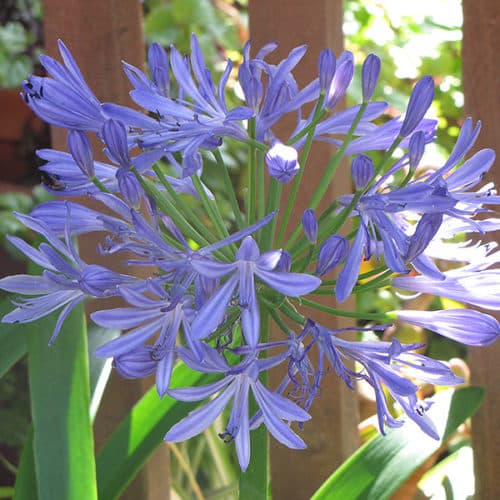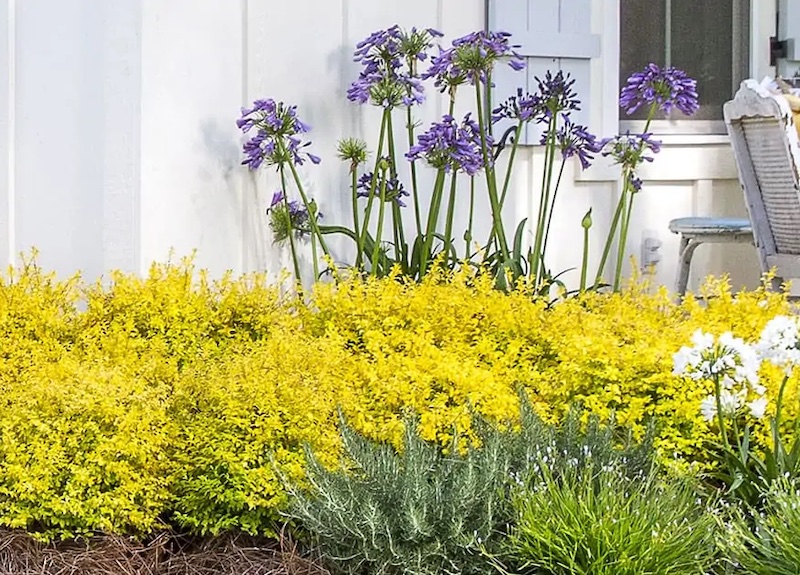Typical Agapanthus Problems and Just How to Resolve Them
Typical Agapanthus Problems and Just How to Resolve Them
Blog Article
Releasing the Secret to Successful Agapanthus Growing: Tips and Tricks for a Flourishing Yard
In the realm of horticulture, growing agapanthus effectively needs a critical strategy that incorporates various facets of plant care. By comprehending the subtleties of agapanthus growing, one can create a setting where these plants flourish and flower generously.
Planting Agapanthus: Best Practices
When growing Agapanthus, correct dirt preparation is essential for guaranteeing effective development and advancement of these lovely flowers. Agapanthus, generally known as Lily of the Nile or African lily, flourishes in well-draining soil with a somewhat acidic to neutral pH degree - Agapanthus. Prior to growing, it is important to change hefty clay dirts with natural matter such as compost or peat moss to boost drain and offer necessary nutrients for the plants
To plant Agapanthus, select a location that gets full sunlight to partial shade, as this will advertise healthy development and plentiful flowering. Dig an opening two times the diameter of the plant's root round and place the Agapanthus at the very same depth it was previously expanding. Gently backfill the opening with dirt, pressing down securely to eliminate any air pockets around the origins.
Water the recently grown Agapanthus completely and remain to keep the soil uniformly damp, particularly during the plant's energetic expanding season. Agapanthus. Applying a well balanced fertilizer once a month can better support the plant's growth and flowering. By following these finest techniques for planting Agapanthus, you can develop a sensational display of these fascinating blossoms in your yard
Ideal Soil Issues for Agapanthus
For ideal growth and flowering success of Agapanthus plants, ensuring the dirt conditions are suitable is essential. Agapanthus likes dirt that is abundant in nutrients, so integrating a well balanced plant food during the growing period can promote healthy growth and vibrant flowers.

Watering and Fertilizing Tips
To make certain healthy growth and vivid blossoms, appropriate watering and fertilizing methods are necessary for successful Agapanthus farming. Agapanthus plants gain from normal watering, especially throughout the growing season. It is recommended to water deeply once a week, ensuring the dirt is damp however not waterlogged. During heat or in pots, even more frequent watering may be necessary to avoid the dirt from drying completely.
When it involves fertilizing Agapanthus, a well balanced plant food with equal parts nitrogen, phosphorus, and potassium can be used in the spring to promote healthy growth and flowering. Slow-release fertilizers are perfect for giving nutrients gradually over a prolonged period. Avoid over-fertilizing, as this can bring about excessive foliage development at the expense of blossoms.
Additionally, including natural issue like garden compost into the soil can boost nutrient degrees and enhance dirt structure, helping in the total wellness of the Agapanthus plants. By following these watering and fertilizing tips, garden enthusiasts can ensure their Agapanthus plants grow and create magnificent displays of blossoms.
Trimming and Deadheading Strategies
Proper pruning and deadheading techniques play a vital role in preserving the wellness and appearances of Agapanthus plants, matching the essential methods of watering and feeding for successful growing. Pruning find this Agapanthus involves removing invested flower heads, yellowing or dead leaves, and total shaping of the plant to advertise better development. Deadheading, the procedure of removing faded blossoms, not only boosts the plant's look yet likewise encourages further flowering.
When deadheading Agapanthus, it is advisable to trim off the flower stem at the base utilizing sharp, clean shears. This process reroutes the plant's energy from seed manufacturing back into origin and foliage development, promoting a healthier and a lot more robust plant. Routine deadheading can expand the growing period of Agapanthus and protect against self-seeding, which can lead to overcrowding.
In terms of pruning, Agapanthus normally advantages from a light trim after blossoming to clean the plant and motivate fresh growth. Cutting down the spent flower stems and removing any kind of dead or damaged foliage assists keep the plant's vigor and total appearance. Nonetheless, it is vital to prevent cutting into the crown of the plant, as this can damage its health and wellness.

Protecting Agapanthus From Pests and Diseases
Implementing reliable pest and illness management strategies is critical to protecting the health and vigor of Agapanthus plants in cultivation. One typical bug that impacts Agapanthus is the Agapanthus borer, a caterpillar that passages right into the plant, triggering damage to the fallen leaves and blossoms.
In addition to bugs, Agapanthus are susceptible to diseases such as root rot and fungal leaf spots. These concerns can often be avoided by making certain appropriate water drainage and staying clear of overwatering. If signs of condition show up, impacted components of the plant ought to be quickly eliminated to stop further spread. Fungicides may likewise be made use of as a treatment measure, following the supplier's directions thoroughly. By remaining visit their website watchful and attending to bug and disease problems immediately, gardeners can assist their Agapanthus flourish and grow.

Verdict
To conclude, successful cultivation of agapanthus needs appropriate planting techniques, ideal soil conditions, adequate watering and fertilizing, regular trimming and deadheading, and protection from insects and diseases. By following these techniques and suggestions, garden enthusiasts can guarantee a prospering yard loaded with stunning agapanthus flowers. click for more Agapanthus. Keep in mind to keep consistent treatment and attention to information to advertise the health and wellness and durability of these spectacular plants
When growing Agapanthus, correct dirt preparation is crucial for ensuring successful growth and development of these lovely blossoms.Water the freshly planted Agapanthus completely and proceed to keep the soil equally wet, specifically during the plant's active growing period.For optimum development and blooming success of Agapanthus plants, making certain the soil problems are perfect is important. When transplanting or growing Agapanthus, make certain the dirt is well-prepared to offer the essential structure for the plants to develop themselves efficiently. One usual pest that impacts Agapanthus is the Agapanthus borer, a caterpillar that tunnels into the plant, triggering damages to the flowers and fallen leaves.
Report this page